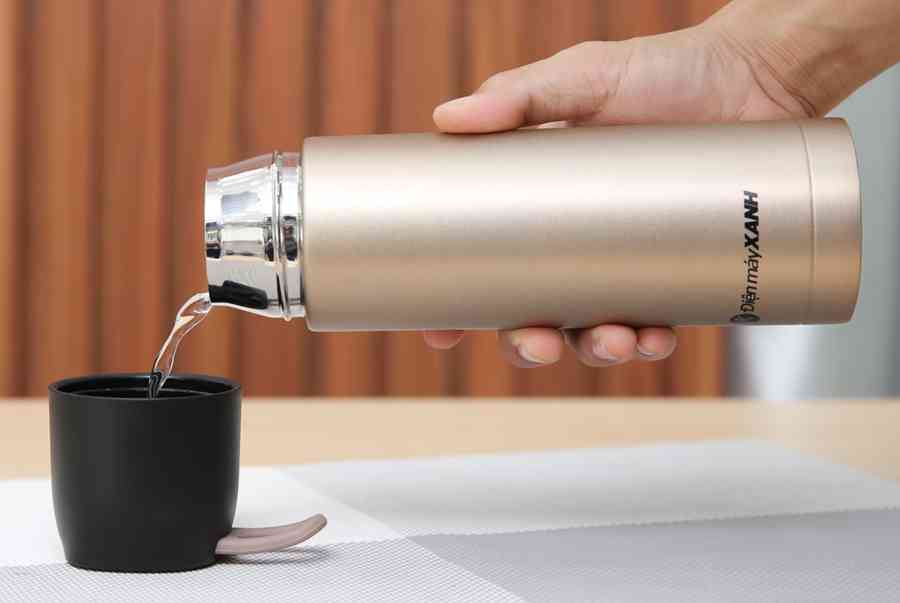Southeast Alaska By the Numbers – Southeast Conference
Mục Lục
2022
 It is impossible to imagine a better year-over-year economic report than 2020 to 2021, due to the devastating economic conditions of 2020.
It is impossible to imagine a better year-over-year economic report than 2020 to 2021, due to the devastating economic conditions of 2020.
Jobs were up by 5% in 2021 overall while communities like Hoonah and Gustavus saw 18% and 19% job increases, respectively. Total wages were up by 11% (+$238 million) — higher overall than 2019 regional earnings. The overall average regional wage increased by 6%.
After a terrible harvest by all measures in 2020, the seafood sector posted incredible gains, becoming the #1 private sector industry in the region for the first time since 2015.
Even with just one-tenth of a normal cruise ship year, visitor industry numbers soared in 2021. Total passenger arrivals from outside the region went up by 155%, with visitor sector jobs up by 36%. The tourism payroll increased by $74 million. Air passengers nearly doubled. Even population and school enrollment figures grew.
Despite impressive gains, by many measures the region still lagged behind 2019. Jobs remained 8% below 2019 annual job figures, and 18% below peak summer employment levels.
Moving into 2022 and 2023 Southeast Alaska’s businesses report tremendous optimism, and with good reason. The significant federal investments into the region in the form of COVID relief dollars worked as intended, giving Southeast Alaska an economy to come back to in 2022.
In the first half of the year, the region added 1,100 jobs, and half of the region’s business leaders expect their prospects to be even better or much better next year. Tourists have come back. The number of cruise passengers arriving in the region is on track to be at 8 times higher than 2021 levels, with a record-setting sailing schedule planned for 2023.
Download PDF
2021

• Thanks to congressional action suspending the Passenger Vessel Services Act, which requires cruises between U.S. ports to be in American-built and manned ships, a small late-2021 cruise season happened, with about 10 percent of normal passenger.
• A 2022 cruise season could bring more than 1.5 million passengers to the region.
• The seafood sector crashed in 2020, but the 2021 salmon harvest is coming in much stronger.
• Regional construction is up, with jobs in the industry gaining 9 percent in the first half of 2021. Many projects are tourism-related.
• Health care was the largest private sector industry in 2021.
•Mining wages in Southeast’s producing mines gained 9 percent in 2020.
Download PDF
2020
 In addition to providing an overview of long-term trend analysis, Southeast Alaska by the Numbers also provides the most up to date 2020 indicator data. In many ways 2019 should have marked the region’s return to a more prosperous and growing economy. Total jobs were up, along with overall wages. Tourism, seafood, mining, and health care jobs were all up, and timber jobs were up by 10%. Nearly every community in the region posted job gains. The number of school children in the region increased for just the 3rd time in 23 years. The number of cruise ship passengers that visited the region in 2019 increased by 14% over the year before as 1.33 million passengers sailed up the inside passage to spend their summer dollars across the region’s larger port communities. The continued loss of government jobs was being offset by increases in other sectors, allowing the overall regional economy to return to a positive trajectory. On March 13th, schools across Alaska were closed until further notice, a clear signal that the COVID-19 epidemic had arrived in Southeast. The virus would soon take the regional economy down with it. From April through July the region lost nearly 7,000 jobs across every sector, but tourism was particularly devastated. The region has lost 17% of its jobs due to the pandemic so far, and is the most economically impacted area in Alaska. On top of COVID-19, Southeast Alaska is currently experiencing one of its worst fishing seasons on record.
In addition to providing an overview of long-term trend analysis, Southeast Alaska by the Numbers also provides the most up to date 2020 indicator data. In many ways 2019 should have marked the region’s return to a more prosperous and growing economy. Total jobs were up, along with overall wages. Tourism, seafood, mining, and health care jobs were all up, and timber jobs were up by 10%. Nearly every community in the region posted job gains. The number of school children in the region increased for just the 3rd time in 23 years. The number of cruise ship passengers that visited the region in 2019 increased by 14% over the year before as 1.33 million passengers sailed up the inside passage to spend their summer dollars across the region’s larger port communities. The continued loss of government jobs was being offset by increases in other sectors, allowing the overall regional economy to return to a positive trajectory. On March 13th, schools across Alaska were closed until further notice, a clear signal that the COVID-19 epidemic had arrived in Southeast. The virus would soon take the regional economy down with it. From April through July the region lost nearly 7,000 jobs across every sector, but tourism was particularly devastated. The region has lost 17% of its jobs due to the pandemic so far, and is the most economically impacted area in Alaska. On top of COVID-19, Southeast Alaska is currently experiencing one of its worst fishing seasons on record.
Download PDF
2019
 Southeast Alaska’s shrinking State sector is down by more than 800 jobs over 7 years. Long the top provider of wages in the region, state government is on track to be a distant third in coming years – after municipal government and tourism – and a bountiful fishing season would make the state the fourth largest provider of wages. The regional health care industry had been optimistic about the trajectory of the economic environment, adding nearly 500 jobs and $50 million in wages over the last four years to support the growing health care needs of an aging population. However, steep state cuts to Medicaid funding, compounded by the potential loss of matching federal dollars, have reversed the growing business confidence of that sector. The region’s mining sector has been growing, while the ship building and construction sectors have contracted. Fishing remains mercurial. Southeast Alaska lost nearly 700 seafood jobs in the past four years, with wages down by $22 million. By volume, the catch for 2018 was the lowest in decades, but strong seafood prices have offset losses. The so-called trade war with China is having deleterious impacts on several Southeast industries, including seafood, timber, and mining. Through all of this, the visitor industry has provided a critical counter-balance to a capricious economy. In just seven years, the tourism sector added more than 2,000 annualized jobs to Southeast communities, increasing wages by $85 million. During the summer of 2020, 1.44 million visitors are projected to spend nearly $800 million during their Southeast Alaska holidays. The collective result was a flat economy in 2018. Southeast Alaska decreased in population by 80 people, added two jobs, and overall wages grew incrementally. The region persevered through several rough years,but Southeast Alaskans are resilient and remain optimistic about the future. More than a quarter of regional businesses plan to add jobs in the coming year, and 68% of business leaders expect the coming year to be positive and/or better than last year.
Southeast Alaska’s shrinking State sector is down by more than 800 jobs over 7 years. Long the top provider of wages in the region, state government is on track to be a distant third in coming years – after municipal government and tourism – and a bountiful fishing season would make the state the fourth largest provider of wages. The regional health care industry had been optimistic about the trajectory of the economic environment, adding nearly 500 jobs and $50 million in wages over the last four years to support the growing health care needs of an aging population. However, steep state cuts to Medicaid funding, compounded by the potential loss of matching federal dollars, have reversed the growing business confidence of that sector. The region’s mining sector has been growing, while the ship building and construction sectors have contracted. Fishing remains mercurial. Southeast Alaska lost nearly 700 seafood jobs in the past four years, with wages down by $22 million. By volume, the catch for 2018 was the lowest in decades, but strong seafood prices have offset losses. The so-called trade war with China is having deleterious impacts on several Southeast industries, including seafood, timber, and mining. Through all of this, the visitor industry has provided a critical counter-balance to a capricious economy. In just seven years, the tourism sector added more than 2,000 annualized jobs to Southeast communities, increasing wages by $85 million. During the summer of 2020, 1.44 million visitors are projected to spend nearly $800 million during their Southeast Alaska holidays. The collective result was a flat economy in 2018. Southeast Alaska decreased in population by 80 people, added two jobs, and overall wages grew incrementally. The region persevered through several rough years,but Southeast Alaskans are resilient and remain optimistic about the future. More than a quarter of regional businesses plan to add jobs in the coming year, and 68% of business leaders expect the coming year to be positive and/or better than last year.
Download PDF
2018
 Southeast Alaska has been experiencing rough economic times, but there are bright points in the region. While the state sector has struggled, we have seen sustained growth in the tourism industry, and there are indications the economy is beginning to stabilize.Dramatic cuts reduced state sector employment in the region by 15% since 2012, a loss of 850 jobs, and an estimated $50 million in lost annual wages. By comparison, the rest of the state experienced a 7.5% decline in state jobs during the same period. State spending cuts have curtailed growth in other industries, especially construction.The regional population declined for the third year in a row, by a combined 1,600 people. About half the population loss consisted of children and 20-somethings leaving Juneau, the community most impacted by cuts in state employment. The seafood industry has been struggling. A poor 2016 harvest led to the loss of 500 jobs; and while the 2017 harvest was on par with 10-year averages, neither the jobs nor the Chinook returned. Chinook harvest levels are the lowest on record. Additionally, the fishing industry is facing the potential impacts of the president’s seafood tariffs. The ferry system continues to face significant cuts, reducing ridership by 20% in the last three years, and bringing 35% fewer visitors to the region. Layoffs were announced at the Ketchikan shipyard, and Ocean Beauty is permanently closing its Petersburg cannery. Just under half of regional business leaders called the Southeast business climate “poor” or “very poor” in 2018, up from 29% in 2015. But not all indicators are bad. There were 380 more jobs in 2017 than in 2016, and we are less than 400 jobs below peak employment levels of 2013. This is almost entirely thanks to massive growth in tourism – specifically cruise ship tourism. Between 2010 and 2019, cruise passenger numbers are projected to increase by 50%, with 1.31 million cruise visitors expected to sightsee here in 2019. Jobs in the visitor industry increased by nearly 2,000 year-round equivalent workers since 2010, and visitors to Southeast spent $65 million here last year. Jobs are poised to expand in health-related fields. Mining and tribal government employment grew last year. Oil prices are improving, and there is hope that this, combined with a permanent fund restructure, will stabilize the government sector. Looking forward, Southeast Alaskans remain optimistic about the future, with two-thirds of Southeast Alaska business leaders expecting their prospects to be positive or to improve in 2019.
Southeast Alaska has been experiencing rough economic times, but there are bright points in the region. While the state sector has struggled, we have seen sustained growth in the tourism industry, and there are indications the economy is beginning to stabilize.Dramatic cuts reduced state sector employment in the region by 15% since 2012, a loss of 850 jobs, and an estimated $50 million in lost annual wages. By comparison, the rest of the state experienced a 7.5% decline in state jobs during the same period. State spending cuts have curtailed growth in other industries, especially construction.The regional population declined for the third year in a row, by a combined 1,600 people. About half the population loss consisted of children and 20-somethings leaving Juneau, the community most impacted by cuts in state employment. The seafood industry has been struggling. A poor 2016 harvest led to the loss of 500 jobs; and while the 2017 harvest was on par with 10-year averages, neither the jobs nor the Chinook returned. Chinook harvest levels are the lowest on record. Additionally, the fishing industry is facing the potential impacts of the president’s seafood tariffs. The ferry system continues to face significant cuts, reducing ridership by 20% in the last three years, and bringing 35% fewer visitors to the region. Layoffs were announced at the Ketchikan shipyard, and Ocean Beauty is permanently closing its Petersburg cannery. Just under half of regional business leaders called the Southeast business climate “poor” or “very poor” in 2018, up from 29% in 2015. But not all indicators are bad. There were 380 more jobs in 2017 than in 2016, and we are less than 400 jobs below peak employment levels of 2013. This is almost entirely thanks to massive growth in tourism – specifically cruise ship tourism. Between 2010 and 2019, cruise passenger numbers are projected to increase by 50%, with 1.31 million cruise visitors expected to sightsee here in 2019. Jobs in the visitor industry increased by nearly 2,000 year-round equivalent workers since 2010, and visitors to Southeast spent $65 million here last year. Jobs are poised to expand in health-related fields. Mining and tribal government employment grew last year. Oil prices are improving, and there is hope that this, combined with a permanent fund restructure, will stabilize the government sector. Looking forward, Southeast Alaskans remain optimistic about the future, with two-thirds of Southeast Alaska business leaders expecting their prospects to be positive or to improve in 2019.
Download PDF
2017
 Last year was a tough year for the Southeast Alaska economy. Jobs and workforce earnings were down for the first time since 2007. Population dropped for the second year in a row, the first losses in a decade as well. The reason for our economic distress is clear. Dropping oil prices combined with falling oil production have drastically reduced the state’s share of oil earnings, which previously provided up to 90 percent of the state’s unrestricted revenues. Last year was also the worst year for our seafood sector in over a decade. However, there is also good news. Tourism is booming, and 2017 will be a record year for cruise and air passengers, along with jobs and spending.
Last year was a tough year for the Southeast Alaska economy. Jobs and workforce earnings were down for the first time since 2007. Population dropped for the second year in a row, the first losses in a decade as well. The reason for our economic distress is clear. Dropping oil prices combined with falling oil production have drastically reduced the state’s share of oil earnings, which previously provided up to 90 percent of the state’s unrestricted revenues. Last year was also the worst year for our seafood sector in over a decade. However, there is also good news. Tourism is booming, and 2017 will be a record year for cruise and air passengers, along with jobs and spending.
Download Full PDF
2016
If it weren’t for state government’s impending fiscal meltdown, the region would be well positioned for a prosperous future.
The last five years have been good to Southeast Alaska. People came here in droves, to visit and to live. Our overall population increased by 4% as 2,730 new people joined our ranks. We broke records in terms of visitors arriving by airplane, and 2016 could be our top year ever for total passenger arrivals by all modes. Since 2010, we added nearly 2,000 jobs and $308 million in total workforce earnings, and 2015 was a record year for regional employment and earnings.
2015

This publication tells two stories about the regional economy: a positive tale of five-year trends, and a more sobering one-year analysis and future forecast. Over the last five years we added 2,600 people and 1,500 jobs to our economy. Total workforce earnings increased by $275 million, with most of that coming from the private sector ($209 million). With the exception of government, nearly every sector flourished. New jobs and investments occurred in the areas of seafood, tourism, mining, construction, healthcare, maritime, and energy. However, data from the last year especially indicates a contraction. Between 2013 and 2014 there were few areas of growth, and many indicators trended slightly downwards. Our population declined by 30 people. Jobs fell by 300, mostly in the areas of government, construction, and health care. There were 34,000 fewer cruise and ferry visitors to the region. The value of seafood harvested in the region fell by $92 million. The price of gold fell by 10%. Early 2015 job reports show more losses on the way. The most concerning signal is the long-term strength of our government, which accounts for more than a third of all workforce earnings in the region.
Download Full PDF
2014

This year the report provides a one-year snapshot of regional economic and socioeconomic trends. It shows that while the economy of Southeast Alaska has been in an expansion phase since 2008, in 2013 that growth leveled off. The 12-page overview provides analysis on demographics, employment, and earnings; the maritime, visitor, seafood, mining, timber, and health care industries; along with public sector developments.
Download Full PDF…
2013

The 2013 report provides a two-year snapshot of the Southeast Alaska economic and socioeconomic trends.
Download full PDF…
2012

Download full PDF…






